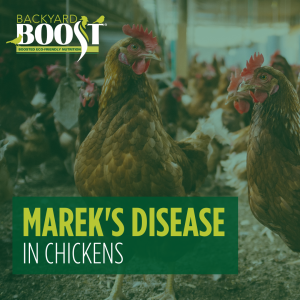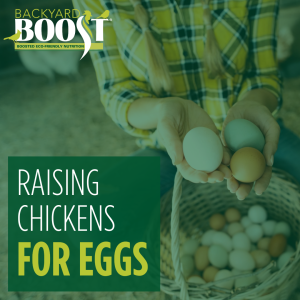
Bird flu, or avian influenza, has existed around the globe for centuries. However, its prominence in the United States has grown since 2020, when the first case of the H5N1 strain appeared in wild birds in our country. Bird flu is a highly contagious viral disease that impacts chickens and other poultry. The symptoms vary depending on the strain, classified as either Low Pathogenic Avian Influenza (LPAI) or Highly Pathogenic Avian Influenza (HPAI). If you’re like us, you’re probably wanting to stay on top of keeping your birds healthy. Here’s what you need to know about bird flu chicken symptoms to identify risks in your flock.
At BioZyme® we know you have deep care and compassion for your backyard flocks. We do, too. We created this quick resource so you could be aware of the bird flu chicken symptoms and how to respond if you see any in your flock. Although we create Backyard Boost® as a line of products purposefully crafted to support the well-being of birds, our products can’t prevent the spread of bird flu.
Bird Flu Symptoms in Chickens
Chickens infected with LPAI may show mild signs that include:
- Decreased egg production
- Mild respiratory symptoms like coughing and sneezing
- Ruffled feathers
- Lethargy or a slight drop in activity levels
However, recently HPAI has become more common and is far more severe, often causing sudden death with no prior symptoms. Other signs include:
- Swelling of the head, neck, eyes and legs
- Purple or blue discoloration of comb, wattles and legs, referred to as cyanosis
- Severe respiratory distress like gasping and nasal discharge
- Neurological signs, such as tremors, twisted neck and even paralysis
- Diarrhea
- Drop in egg production with soft-shelled or misshapen eggs
What to Do If You Notice Bird Flu Chicken Symptoms
If you notice any symptoms of bird flu in your backyard chickens, act immediately to prevent an outbreak. If possible, isolate impacted birds from the rest of the flock and avoid handling them unnecessarily. Contact local veterinary authorities or agricultural officials to report suspected cases, as bird flu is a notifiable disease.
Implement strict biosecurity measures, such as disinfecting equipment, restricting access to your coop or backyard and ensure no contact with wild birds or other rodents. Avoid moving birds or eggs until authorities assess the situation. In severe cases, authorities may require culling infected flocks to prevent further spread.
Rely on Backyard Boost for Information
We hope you found this resource helpful about bird flu chicken symptoms and how to respond if you see them. We do offer products for your chickens’ well-being. However, biosecurity and total isolation from other infected birds – both wild and domestic – and other wildlife is really the only prevention for the bird flu.
If you’re interested in one of our Backyard Boost products, you can purchase them online. Otherwise, we suggest finding one of our authorized BioZyme dealers near you.
New to keeping a flock and looking for more educational resources? Use our Chicken Care Cycle as your guide to all things backyard chicken care.
Or, if email is more your speed, you can sign up for our regular e-newsletter. That will help you stay up to date on all our informational blogs, educational resources, and great product deals!

